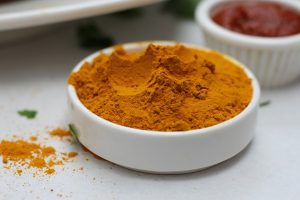 Natural Insight
Natural Insight
Adjoin Your Joints II
By Sabeen Faquir
Previously, I wrote about the use of fish oil, glucosamine and chondroitin, or collagen for joint pain and possible repair. But, there are some other choices to manage joint pain, as well. One of the most touted is turmeric, also known as curcumin; Another is bromelain.
Most commonly, there are two divisions of arthritis: osteoarthritis and rheumatoid arthritis. Osteoarthritis is the age-related degeneration of joints and rheumatoid arthritis is an auto-immune disorder. The Western Ontario and McMaster Universities Osteoarthritis Index (WOMAC) is a set of standardized questionnaires used by health professionals to help determine the severity of joint degeneration.
Turmeric has been studied to be beneficial for people with osteoarthritis. In a double-blind, randomized, placebo-controlled trial of 160 patients with osteoarthritis, WOMAC scores showed improvement with time. The levels of the following inflammatory and oxidative stress biomarkers also showed improvement: viz., IL-1β, ROS, and MDA (Srivastava, et. al). Furthermore, in a rat model of human rheumatoid arthritis, ginger-turmeric mixed rhizomes proved effective against the severity of the disease (Ramadan, El-Menshawy). Some precautions to taking turmeric include avoiding blood-thinners. This is because turmeric, itself, is a blood thinner.
To address joint pain, some other people find bromelain to be helpful. Bromelain is a proteolytic enzyme found in pineapple stems. Essentially, it breaks down proteins. But, the important thing to know about bromelain is that it selectively breaks down inflammatory proteins which happen to cause pain in the joints. In a review study from the School of Physician Assistant Studies, bromelain combination therapy was found to be as effective as NSAID’s to relieve joint pain in patients suffering from osteoarthritis. Specifically, combination oral enzyme therapy with bromelain, trypsin, and the antioxidant rutosid, resulted in no significant differences in registered pain at rest, pain with movement, Lequesne’s Functional Index, joint stiffness, range of motion, or swelling in the affected joint.
Bromelain does interact with some common antibiotics by increasing its amount and is also thought to slow the effects of anticoagulants. So, please talk to your healthcare provider before beginning any supplement regimen. For joint pain, ask about turmeric or bromelain and discuss whether or not they’re appropriate for you.
Disclaimer: The content of this article is not intended to diagnose, treat, prevent, or cure disease.
Sources:
Srivastava, S; Saksena, AK; Khattri, S; Kumar, S; Dagur, R. Curcuma longa extract reduces inflammatory and oxidative stress biomarkers in osteoarthritis of knee: a four-month, double-blind, randomized, placebo-controlled trial. Inflammopharmacology. 2016 Dec;24(6):377-388.
Ramadan, G; El-Menshawy, O. Protective effects of ginger-turmeric rhizomes mixture on joint inflammation, atherogenesis, kidney dysfunction and other complications in a rat model of human rheumatoid arthritis. International journal of rheumatic diseases. 2013 Apr;16(2):219-29
Bradley, Paul. Bromelain Containing Enzyme-Rutosid Combination Therapy is as Effective as Nonsteroidal Antiinflammatory Agents for Treatment of Osteoarthritis. School of Physician Assistant Studies. 2014;475.

